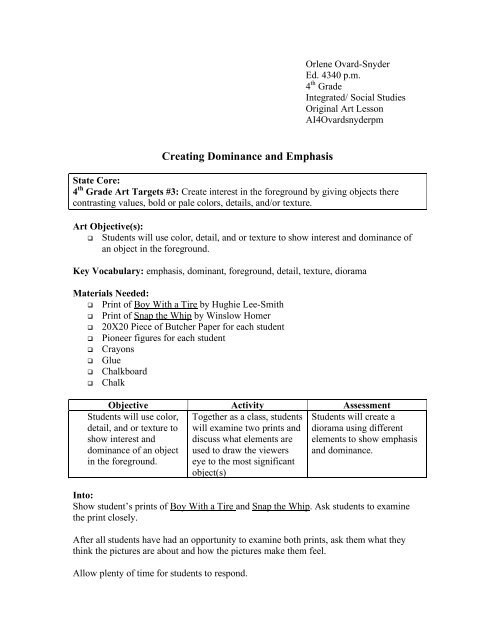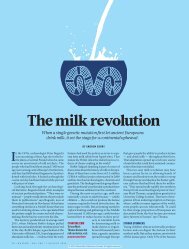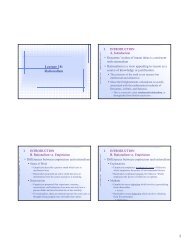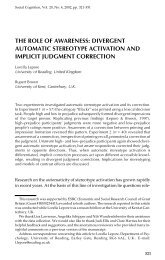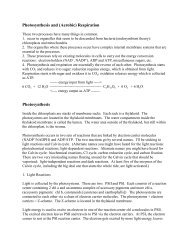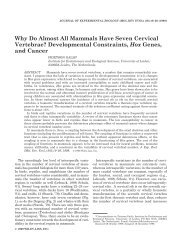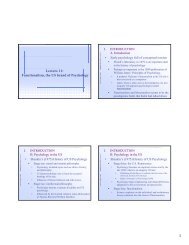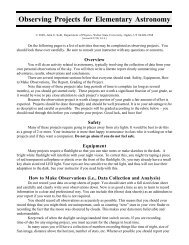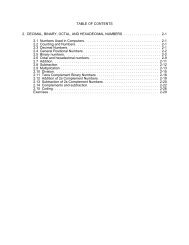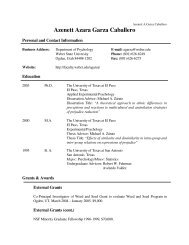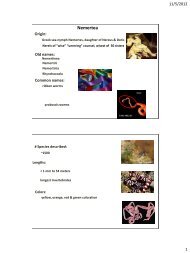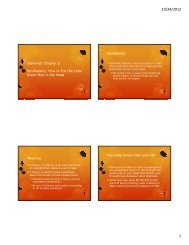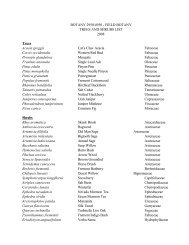Creating Dominance and Emphasis - Weber State University
Creating Dominance and Emphasis - Weber State University
Creating Dominance and Emphasis - Weber State University
Create successful ePaper yourself
Turn your PDF publications into a flip-book with our unique Google optimized e-Paper software.
<strong>Creating</strong> <strong>Dominance</strong> <strong>and</strong> <strong>Emphasis</strong><br />
Orlene Ovard-Snyder<br />
Ed. 4340 p.m.<br />
4 th Grade<br />
Integrated/ Social Studies<br />
Original Art Lesson<br />
AI4Ovardsnyderpm<br />
<strong>State</strong> Core:<br />
4 th Grade Art Targets #3: Create interest in the foreground by giving objects there<br />
contrasting values, bold or pale colors, details, <strong>and</strong>/or texture.<br />
Art Objective(s):<br />
Students will use color, detail, <strong>and</strong> or texture to show interest <strong>and</strong> dominance of<br />
an object in the foreground.<br />
Key Vocabulary: emphasis, dominant, foreground, detail, texture, diorama<br />
Materials Needed:<br />
Print of Boy With a Tire by Hughie Lee-Smith<br />
Print of Snap the Whip by Winslow Homer<br />
20X20 Piece of Butcher Paper for each student<br />
Pioneer figures for each student<br />
Crayons<br />
Glue<br />
Chalkboard<br />
Chalk<br />
Objective Activity Assessment<br />
Students will use color,<br />
detail, <strong>and</strong> or texture to<br />
show interest <strong>and</strong><br />
dominance of an object<br />
in the foreground.<br />
Together as a class, students<br />
will examine two prints <strong>and</strong><br />
discuss what elements are<br />
used to draw the viewers<br />
eye to the most significant<br />
object(s)<br />
Students will create a<br />
diorama using different<br />
elements to show emphasis<br />
<strong>and</strong> dominance.<br />
Into:<br />
Show student’s prints of Boy With a Tire <strong>and</strong> Snap the Whip. Ask students to examine<br />
the print closely.<br />
After all students have had an opportunity to examine both prints, ask them what they<br />
think the pictures are about <strong>and</strong> how the pictures make them feel.<br />
Allow plenty of time for students to respond.
Through: (Allow time for <strong>and</strong> discuss responses after each question)<br />
Q: What object in these pictures do you think the artists feels is the most important?<br />
Q: What did the artist do to draw importance to these objects?<br />
Allow students time to respond, list detail, color, <strong>and</strong> texture on the board as they are<br />
mentioned.<br />
Show empty diorama<br />
This is called a diorama.<br />
Write the word diorama on the board.<br />
A diorama is a miniature scene depicting characters in a natural setting.<br />
As you can see, my diorama is empty. In Social Studies you have been talking about<br />
pioneers, so I am going to fill my diorama with figures to create a miniature scene from<br />
pioneer times.<br />
Show the various characters to be featured in diorama. (Father, Mother Wagon, Boy,<br />
Girl, Chimney Rock, dog, snake).<br />
Place figures in the diorama using the brightly colored family. Allow students time to<br />
look at it.<br />
Q: What do you think I am trying to draw your attention to if I designed my diorama like<br />
this?<br />
Q: What elements did I use to do this?<br />
Place figures in the diorama using the detailed wagon. Allow students time to look at it<br />
again.<br />
Q: Now what do you think I am trying to draw you attention to?<br />
Q: What element did I use this time?<br />
Place figures in the diorama using the textured Chimney Rock. Allow student time to<br />
look at it again.<br />
Q: Now what do you think I am trying to draw your attention to?<br />
Q: What element did I use this time?<br />
Now it is time for all of you to create a diorama. Before you start, I want you to think<br />
about what object you want the viewer to be drawn to. Then decide if you are going to<br />
use color, detail, or texture to accomplish this. Your projects will be graded on 3 things;<br />
completeness, neatness, <strong>and</strong> your use of one of the elements to show importance we have<br />
just discussed.
Beyond:<br />
H<strong>and</strong> out supplies for diorama. Show students how to make the diorama (See instructions<br />
below)<br />
Allow students time to make their dioramas.<br />
Assessment:<br />
Grade dioramas using the rubric.<br />
Score Completeness Neatness Elements<br />
1 Project. Includes Project is not neat. Element is missing.<br />
less than 2 figures Most figures not<br />
<strong>and</strong> background is securely fastened<br />
not colored <strong>and</strong> a lot of excess<br />
glue.<br />
2 Project includes at Project is somewhat Element is present<br />
least 2 figures but neat. Some figures but not emphasized.<br />
background is not are securely<br />
colored.<br />
fastened a lot of<br />
excess glue<br />
3 Project includes at Project is mostly Element is present<br />
least 2 figures <strong>and</strong> neat. Most figures <strong>and</strong> somewhat<br />
background is are securely emphasized.<br />
colored.<br />
fastened some<br />
excess glue.<br />
4 Project includes at Project is neat, Element is present<br />
lease 3 figures <strong>and</strong> figures are securely <strong>and</strong> emphasized.<br />
background is fastened no excess<br />
colored.<br />
glue.<br />
Instructions for making dioramas: Fold square paper corner to corner. Open up <strong>and</strong><br />
fold again corner to corner using other two corners. Open up again. Cut one folded line<br />
from corner to center. Slide one cut side under the other cut side <strong>and</strong> staple or glue in<br />
place. Diorama should resemble one half of a pyramid. (Students will need to color the<br />
background <strong>and</strong> bottom before stapling or gluing it together.<br />
Patterns for pioneer cutouts were found in This is the Place The Story of the Mormon<br />
Trail An Activity Book for Children by William E. <strong>and</strong> Jan C. Hill. HillHouse Publishing<br />
1996. Centereach, NY. Pages 36-39. ISBN 0-9636071-2-X


